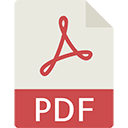RUCL Institutional Repository
Drought Characterization and Agricultural Adaptation in Northwest Bangladesh
- RUCL Repository
- →
- Institute of Bangladesh Studies (IBS)
- →
- PhD thesis
- →
- View Item
JavaScript is disabled for your browser. Some features of this site may not work without it.
| dc.contributor.advisor | Kamruzzaman, Md. | |
| dc.contributor.advisor | Khalek, Md. Abdul | |
| dc.contributor.author | Chowdhury, J.M. Adeeb Salman | |
| dc.date.accessioned | 2025-11-26T07:11:43Z | |
| dc.date.available | 2025-11-26T07:11:43Z | |
| dc.date.issued | 2024 | |
| dc.identifier.uri | http://rulrepository.ru.ac.bd/handle/123456789/1168 | |
| dc.description | This Thesis is Submitted to the Institute of Bangladesh Studies (IBS), University of Rajshahi, Rajshahi, Bangladesh for The Degree of Doctor of Philosophy (PhD) | en_US |
| dc.description.abstract | Climate change and frequent drought has been detected as a global problem due to extreme climate variability. In recent years, Bangladesh has already shown an increased frequency of droughts, mainly observed in the northwest region. Drought mainly is a slow onset natural disaster that creates threats to agro-ecological properties. The aims of the study are to comprehend the trends of variation in two meteorological variables (Rainfall and Temperature) during the period 1960–2021 as well as analyzing current drought situation, characterization and future prediction of drought in the northwest region. The meteorological data of five stations have been collected from Bangladesh Meteorological Department (BMD), Dhaka. Finally, 375 sample household are selected for investigating farmer’s perception, drought impacts and adaptation strategies. Four upazilas (sub-districts or parts of district) are taken randomly (Tanore, Shapahar, Chirirbandar, and Nachole) from the northwest drought prone district for primary data collection through questionnaire survey. Different types of linear and non-linear trend detection test are applied for identifying variation in the climatic parameters such as linear trend analysis, non-parametric Mann-Kendall (MK), Kendall’s tau, Sen’s slope estimators, Spearman’s rho (SR) test, Autoregressive Integrated Moving Average (ARIMA) model and Seasonal Autoregressive Integrated Moving Average (ARIMA) model (future prediction). Further, sequential Mann-Kendall test is also executed to detect trend variations and abrupt deviations over time in rainfall stations. During the period 1960-2021, Rajshahi station is detected lowest annual average rainfall (1460 mm) but the annual average in the northwest region is 1768 mm. The rate of change assessed by Sen’s slope estimator is -5.50 mm/year in the Rajshahi station, which is found highest significant decreasing trend. Cropping seasonal rainfall analysis, only the Rabi season (80%) are found most negative trend in all selected stations. In the northwest region, the annual average temperature is 24.96C. Among the five stations, Rajshahi station is detected highest maximum annual average temperature (26.57C) during 1960-2021. The trend analysis test indicates that except Dinajpur station, increasing trends are observed in both the annual and seasonal temperature analysis, apart from that only Bogura and Rangpur stations found positively significant at 5% level of significance. The degree of change has discovered by the Sen’s slope estimates varies from -0.003C/year to 0.017C/year. The Kharif season is showed a significant positive trend in all recorded stations, while the Rabi and pre-Kharif seasons are continued both increasing and decreasing trends. The spatial distribution of seasonal rainfall and temperature are identified by Geographical Information System (GIS). Drought characterization and monitoring using precipitation-based index (SPI), for 1, 3, 6, 9, 12, 24 months at different time scales measure the severity of lack of precipitations of different weather stations of northwest region. Transition probabilities of dry state of SPI values, and probabilistic characterization of different state of selected station using Markov chain analysis. The drought interarrival time and mean drought interarrival are increasing from lower to higher SPI series in all study stations. SPI 12 and SPI 24 are found longer months of drought duration exist high probability that the same state will continues for the next state, like ‘severe drought’ would follow ‘severe drought’ and ‘extreme drought’ would follow ‘extreme drought’ period respectively. Survey based, farmers’ perceptions about climate change are identical to the meteorological trends in the mentioned period except for Dinajpur station. Study showed, drought is mainly affecting increased cost of production, declining ground water levels, crop failures, scarcity of soil water, lower income and food scarcity etc. The multinomial logistic model (MNL) results are found that age, education, income, family size, farming experience, access to climate, farmer-to-farmer extension, social mobility, and loan subsidies directly influenced adaptative decisions. The most significant adaptation strategies adopted by the farmers are irrigation facilities, agronomic management, drought-tolerant rice varieties, adopting new technologies, and alternative enterprises of land use change. Finally to protect farmers from natural disasters, especially drought, sustainable water management plan, credit support from government and NGO’s, less water consuming crops, new crop varieties and re-excavation of traditional ponds must be implemented in the study area. | en_US |
| dc.publisher | University of Rajshahi | en_US |
| dc.relation.ispartofseries | ;D5161 | |
| dc.subject | IBS | en_US |
| dc.subject | Droughts—Bangladesh—Northwestern Region. | en_US |
| dc.subject | Agriculture—Bangladesh—Northwestern Region—Adaptation. | en_US |
| dc.subject | Climatic changes—Bangladesh. | en_US |
| dc.subject | Sustainable agriculture—Bangladesh. | en_US |
| dc.subject | Water scarcity—Bangladesh. | en_US |
| dc.title | Drought Characterization and Agricultural Adaptation in Northwest Bangladesh | en_US |
| dc.type | Thesis | en_US |
Files in this item
This item appears in the following Collection(s)
-
PhD thesis [170]
